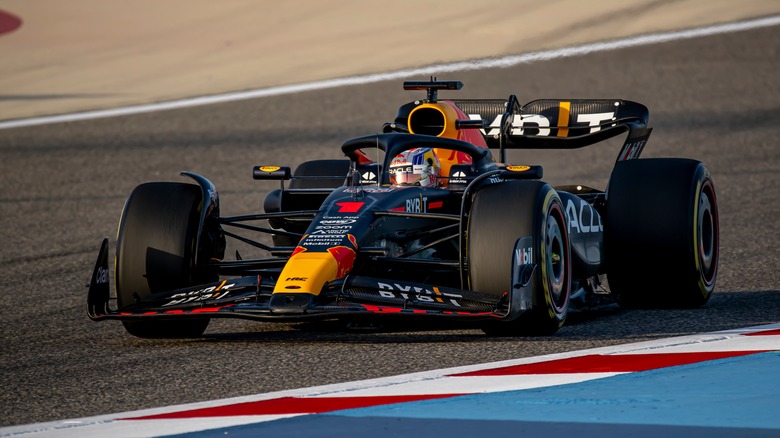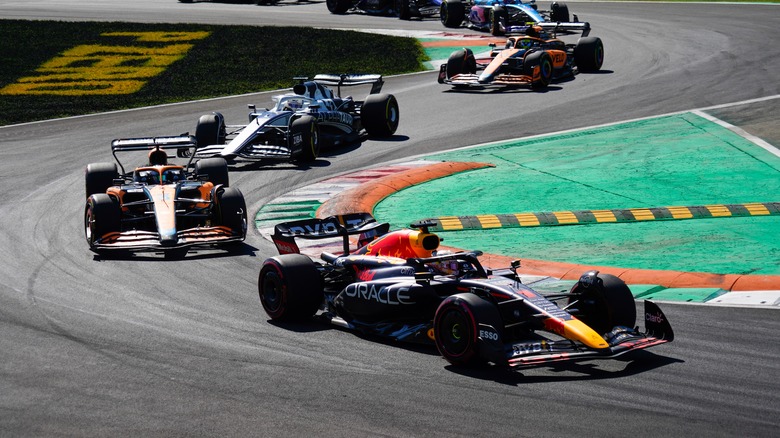What Is Porpoising In F1, And Why Does It Matter?
Formula 1 racing has become one of the most popular sports in the world, and its fanbase only seems to be growing. With legions of new fans, some struggle to comprehend a wide range of racing terminology. One term often on the lips of F1 diehards and newbies alike is "porpoising." The term is inspired by how dolphins bob over and under the ocean waves when they swim. However, in F1 circles, the term refers to a car bouncing up and down as it speeds around the track.
The phenomenon is an aerodynamics issue, occurring when a vehicle is pulled too close to the ground, thus stalling the airflow underneath. The lack of downforce ultimately causes the cars to surge back upward, and as the cycle repeats, the vehicle bounces up and down dramatically as it charges forward. Occasionally, the bouncing is so violent cars even strike the ground underneath.
Porpoising has been a common issue on the modern F1 circuit. However, the problem became the focal point for safety concerns in 2022 when a new generation of cars proved particularly vulnerable to the phenomenon. If you've ever watched an F1 racer in action, it should go without saying that bouncing violently is the last thing a driver wants at such high speeds as it hampers both control and vehicle performance.
F1's governing body has made changes to address the circuit-wide porpoising problem
As it turns out, a driver tragically crashing a speeding F1 vehicle is not the only concern regarding porpoising. As the 2022 season went on, it was widely publicized that many drivers were experiencing extreme back discomfort, with the dramatic bouncing blamed for putting undue stress on their spinal cords. The bouncing created such a problem for seven-time world champion Lewis Hamilton during a 2022 race the Mercedes driver needed help to get out of his car.
Throughout the 2022 season, FIA (F1's governing body) implemented changes to limit or prevent porpoising. Though some teams reportedly resisted the changes, contending they might hinder performance, the changes were implemented before the season's end. And as Mercedes driver George Russell told The Athletic, the changes immediately improved the performance of his vehicle.
The most significant change included raising the minimum floor edge by 15mm (roughly half an inch). That change carried over to the 2023 season, with the FIA requiring teams to elevate the diffuser throat height and stiffen its edges. They also insisted teams install sensors on the bottom of a vehicle to monitor porpoising with real-time data. Though some bouncing was noticed in cars early in the 2023 campaign, many F1 insiders agreed the issue was nowhere near where it was in the 2022 season. F1 racing may never eliminate porpoising. But for now, the problem is very much under control.

